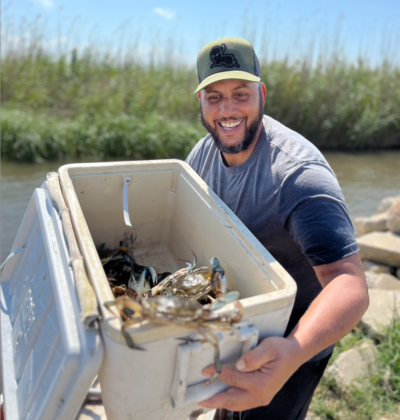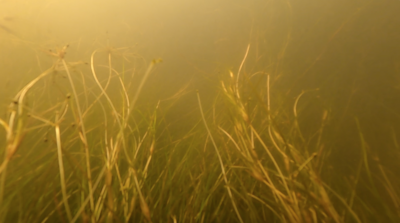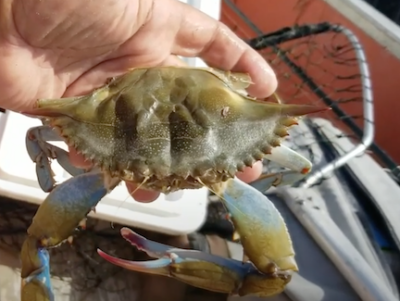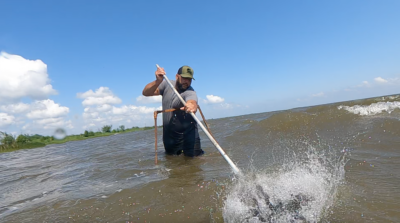Pushin’ for Pontchartrain Crabs
Keith Lusher 07.03.23


LaBostrie executes a more primitive way of catching crabs which involves a simple dip net and a tool he calls a “pusher.” Picture an upside-down handle of a lawnmower. LaBostrie uses it to push along the sandy bottom of Lake Pontchartrain. When he gets to a section of grass he watches for crabs to shoot out when the pusher hits them. Then he quickly scoops them up with a dip net.

I joined LaBostrie on a trip so I could see his brilliantly simplistic method firsthand. As I drove up, LaBostrie was unloading his 13-foot Coleman canoe into the lake. He motioned to join him and within 5 minutes we were both walking in two feet of water. LaBostrie was pushing the canoe ahead of him. “This is it man! This is how we used to do it! So many memories come flooding back when I’m out here pushing,” LaBostrie said.
As we walked LaBostrie pointed to an area of eelgrass along the shoreline. As we approached he said “Watch this!” and started to push the fiberglass tool through the grass. All of a sudden he let the handle of the pusher fall to his stomach and grabbed the scoop net that he had rating on the handle of the pusher. He quickly made an overhand scoop and drug the net along the bottom towards him. He flipped the net over and in it was a big blue crab. “That’s all there is to it,” he said. We went on to catch over two dozen crabs on our trip. Most of the crabs were #2’s but there were a few #1’s as well. Generally, a #1 sized crab will reach 5 1/2 to 6 inches from point to point.
Each time he scooped a crab he would walk back to the canoe and toss it into the ice chest.
After the trip, LaBostrie prepared a boil complete with lemons, garlic, sausage, and other spices. The blue crabs were delicious but LaBostrie was a bit disappointed that we didn’t catch any of the “premium crabs”

Here in the South, when it comes to crabs, ask any seafood lover and they’ll tell you that soft-shell crabs are at the top of their lists of favorites. LaBostrie comes across soft shells often and utilizing this method of crabbing allows him to scoop them up while the crabs are molted and still soft. They’re known by the locals as “Doubles.” “Ohh I like those doubles! That’s where one crab is hugging the softer crab in order to defend it because it can’t defend itself,” he said. LaBostrie has had trips where he’s caught a dozen soft-shells or busters.


